MAN AND NATURAL DISASTERS --- Tropical Cyclones; and the sea breathed out, and that was all I could remember.
I want you to imagine that you took the love of your life to the beach. You have already made up your mind that she is the one you will love to spend your whole life with, and on that faithful day, you are going to propose to her. You have already performed your friends and her friends before time to be at that. You even made them learn how to form the shape of heart while standing close to each other, and they were going to display it on that day. Damn! You have covered it all, it was surely going to be awesome.
That day, you woke up with the brightest smile in your face, you quickly ran to her, and after hurrying her to come with you, you guys went to the beach. Your friends were already there, waiting for your signal to start what have already been rehearsed. You still wanted to make everything so grand, so you started to teasing her. "Look Dave, Look!" It was her pointing at something that looks like a waterspout. Damn, the day keeps getting better and better.
All of a sudden, the stuff that looks like a waterspout now became a big column of wind, rain and storm. The speed of the wind increased, and just in a twinkle of an eye, the beautiful day turned sore. You turned to see everyone already running for their lives, quickly, you held her by hands, "Run Rachel, Run!". But that huge column have already made landfall, and was already destroying everything in its path. You kept running, but It was getting closer, closer, closer.. Finally, all you could hear is a terrible roaring, probably of air, few minutes later, silence.
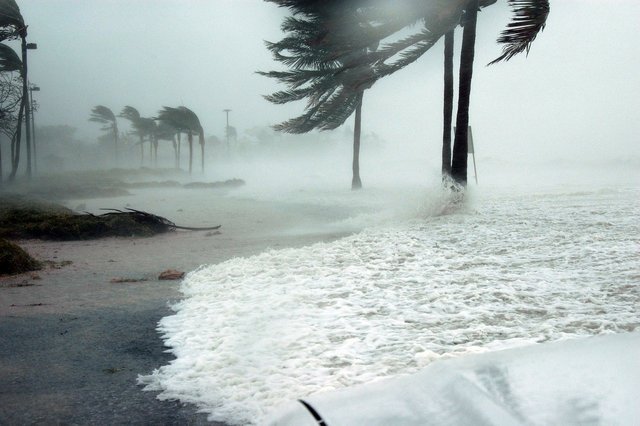
Probably, this is someone's last experience before he/she died as a result of tropical cyclone, this once affected Akron, Ohio, here are some of the things to do in Akron if you decide to go see the action of this cyclone in Akron. In this article, we will be discussing about tropical cyclones, how it is formed, it's effects, how names are assigned to them and also how to survive a Tropical cyclone.
Before we go further, i will recommend you go on a food tour of the united states by exploring guides on The foodies checklist and restaurants marker
TROPICAL CYCLONE
A Tropical cyclone is an intense storm that moves in a circle, and is known to always originate from warm tropical oceans. Some of the basic features of tropical cyclones include a spiral arrangement of thunderstorms, heavy rainfall, strong winds, and also a very low pressure at its center. Having a diameter between 100 - 2000 km in diameter, It draws it's energy from the surface of the sea, and once it remains over this warm water, it maintains it's strength.
It is normal for a tropical cyclone to generate a wind that has a speed of 119km/hr, in some extreme cases, it can generate a wind which it's speed is more than 240km/hr. A part from the heavy rainfall that accompanies a tropical cyclone, there is another devastating phenomenon known as the storm surge which also accompanies tropical cyclone. This storm surge is quite terrible, as it is an elevation of the sea above the normal water level for more than 20 feet high.
Thus, all these factors (heavy rainfall, strong wind, storm surge) make tropical cyclone a very deadly phenomenon. Tropical cyclones mainly occur between the months of July and September in the Northern hemisphere, while in the southern hemisphere, it occurs between the months of January and March.
The winds of a tropical cyclone is driven by the rotation of the earth and also by the core which is at lower pressure than the outer part of the cyclone. The rotation of the earth deflects the path in which the wind moves through a phenomenon known as the Coriolis force. This is the reason why the tropical cyclone that occur in the Southern hemisphere rotates in a clockwise direction while the one that occur in the Northern Hemisphere rotate in a counterclockwise direction.
TROPICAL CYCLONES, HURRICANES, TYPHOONS ALL MEAN THE SAME
Tropical cyclone is also known as hurricanes or typhoons. The variation in name depends on the place it is formed. If a tropical cyclone occurs in the Atlantic Ocean or in the North-Eastern Pacific Ocean, it is called a Hurricane, but if it occurs in the North-western Pacific Ocean, it is called a Typhoon. Places in this region includes, Japan, China and Philippines. In the Indian Ocean and the western South Pacific, they are referred to as either severe tropical cyclones, "tropical cyclones" or just "cyclones".
Note:- To avoid confusion, I will be making use of the universal name for this phenomenon, which is Tropical cyclone through out this article
PARTS OF A TROPICAL CYCLONE
A tropical cyclone can be divided into three parts or regions. They are the eye, the eyewall, the rainband.
The Eye
The eye of a tropical cyclone is its centre part. The diameter of the eye of the cyclone can be as large as 32- 48km wide. Nothing much really happen here, when one look up the sky at this point, this region appears relatively calm when compared to the eyewall and the rainbands. When the eye passes over an area, the wind slows down and everything appears as if the storm have died down. But don't let yourself be fooled by it, because after the eye comes the eyewall which brings hell with it as it comes.
The Eyewall
The eyewall is the most destructive part of a tropical cyclone. It is at this region of the tropical cyclone where the wind is heaviest, and also where the wind is strongest. Its deep convective cloud rises up more than 15,000m above the earth's surface. The eye wall is majorly a ring of thunderstorm, it's surrounds the eye and it is this part that causes the destroying of lives and properties that is associated with tropical cyclones Any change in the structure of the eyewall will result to a change in the tropical cyclone.
Rainbands
This is outside part of the cyclone. It is at this point that one experiences quick and sudden outburst of rainfall. There are chances though there might be gaps within the rainbands where stuffs like wind or rain don't occur.
LIFE CYCLE OF A TROPICAL CYCLONE
Before a storm develops to a point that it is referred to as a tropical cyclone, it has to pass through so many stages. When a tropical cyclone begins to develop, it starts first as a tropical disturbance, this occurs whenever the a group of cumulonimbus clouds that are weakly organized in an easterly wave starts to show signs of weak circulation.
As this continues, a point will reach when it's wind speed gets to 36 km/h, at that point, we consider it as a tropical depression. When the speed of this wind increases and exceeds 63km/h we refer to this storm system as a Tropical Storm. Finally, when the speed of the wind exceeds 119km/h it becomes a tropical cyclone
NAMING OF A TROPICAL CYCLONE
Due to the fact that more than one tropical cyclone can happen in a place at a time, they are named so as to keep track of each of this storms. This naming is done by various warning centers so as to enable them pass the same message to the public about the danger ahead, or what is happening without creating confusion.
Before the formal way of naming these storms began, these tropical cyclone were named based on place of occurrence, the object, or the name of the saint's feast day it occurred. Right now, they are named according to a list. These tropical cyclones get there name first when they get to a speed of 38mph and become a Tropical Storm.
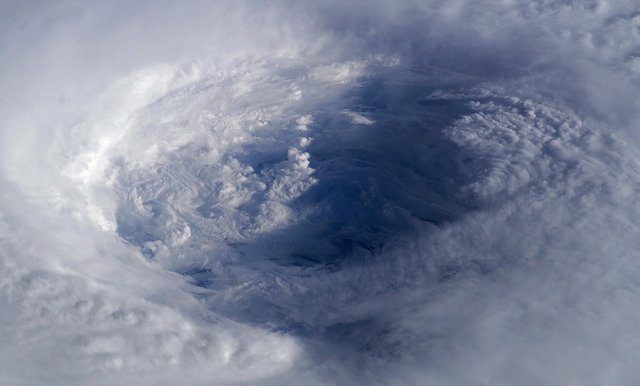
Pixabay.com: The top view of tropical cyclone Isabel
The first one to happen in a year gets to have a name that starts with an A. The next to occur gets a name that starts with B, this continues till we get to Z. Up to six list are created each year, and this list is reused every 6 years. Any of this storm that causes any notable damage, it's name is removed from the list and it is then replaced with a more suitable name for it that starts with the same letter as its previous name. Some of the names include, Mitch, Isabel, e.t.c.
FORMATION OF TROPICAL CYCLONE
Tropical cyclones are destructive due to the great spiral speed they possess. The fuel needed to power a tropical cyclone is provided by a warm ocean which transfers both water vapor and heat to an over lying air through evaporation. As this warm moist air rises upwards from the sea surface, it creates an area where the air pressure is low. Due to the fact that the air in the areas that surrounds this newly created low pressure area has a higher pressure than it, the air from those areas directs themselves to the area of low air pressure.
As the warm air rises (remember that warm air is less dense than cold air), it expands first, then cools down therefore becoming saturated as it releases its latent heat as a result of condensation. Due to this, the column of air in the core gets warmed up and at the same time moistened too. When this occurs, a temperature difference is developed between the rising air and the surrounding. This difference in temperature enhances the upwards movement of the air. It also causes the air to swirl and prompt the formation of cumulonimbus clouds.
The more this happens, the more the speed of the wind increases and the more it rotates. Mind you, the surface of the sea needs to be at a temperature of 26°C and above for a tropical cyclone to fully occur. This is because, at a lesser temperature, the evaporation rates will be too slow to provide the warm vapor and heat needed to power the tropical cyclone. For this reason, they occur mainly at the equator where the sun have warmed the ocean.
Soon, the storm begins to rotate very fast. As the storm rotates faster, the center of the cyclone begins to calm down, till it becomes clear while the outer part becomes more and more disastrous as it spreads. When the speed of the wind reaches 119km/hr, it becomes a tropical cyclone. We refer to this calm center as the eye of the cyclone. A tropical cyclone can release more than 2.4 trillion gallons of rain just in one day. That's just more than enough water to cause a flood or even a landslide. As it swirls and move, when it finally leaves the sea and gets to the land, it destroys lives and properties.
EVENTS ASSOCIATED WITH TROPICAL CYCLONES AND THE DAMAGES THEY CAUSE
Tropical cyclone is probably the most dangerous and powerful natural disasters, as whenever it occurs, it prompts other natural disasters like flooding, tornadoes and even wave surge. Let's get to analyze the events that occur alongside tropical cyclones and the damages they cause.
High Wind
The speed of the wind of a tropical cyclone can be as high as 74mph for just a minor storm and more than 155mph for an even catastrophic storm. No one really knows as anemometers of reporting stations gets destroyed or even ripped off by the excessive wind everytime a tropical cyclone occurs.
The wind associated with tropical cyclones is very dangerous as it is the major causes of most of the structural damages caused by a tropical cyclone. This heavy wind easily uproots trees from their roots, push down houses that do not have strong foundations, power lines and poles are also destroyed by it too. When houses get pulled down by this heavy wind, those living inside it is may not survive it.
Storm Surge
Storm surge is the most notable effect of the tropical cyclones as it is responsible for more than 90% of the death associated with tropical cyclones. When a tropical cyclone develops, it causes a rapid rise in the level of the water where it forms. The process the storm surge forms is this; as the tropical cyclone travels from the ocean or sea to the coast, it drives water to towards the shore.
As the storm leaves the deep part of the water and approaches the shallow part of the water, it causes water to pile up. Due to the force of the winds associated with tropical cyclones, this water is pushed ashore. In the beginning, the water level rises slowly, but as the eye of the storm gets closer to this water build up, the water rises even faster.
The weight of a cubic yard of water is about 1,700 pounds, imagine when this weight falls on a structure, or even a human being. Unfortunately, that's what this storm surge does as it pushes water to the land. The more the tropical cyclone generates storm surges, waves upon waves of water keeps coming ashore and causing destruction. Flooding also develops as a result of this excess deposition of water on land. Not only lives are lost whenever this happens, also billions worth of properties are destroyed and carried away by flood.
Tornadoes
A part from from flooding, which is a natural disasters, another type of natural disaster that is prompted by a tropical cyclone is a tornado. Though the tornado that occurs during a tropical cyclone occurs at a minimal strength, it still causes destruction of properties and lives. The reason why a tornado occurs in a tropical cyclone is because of the instabilty and the also the huge amount of energy that is created when it arrives at the shore.
Check out this DIY article: How to Tell if a Car Fuse Is Blown – (Everything to Know)
Heavy Rainfall
Whenever a tropical cyclone occurs, it is always accompanied by a heavy rainfall. This rainfalls isn't just resisted to the area where the storm makes landfall, nor does it cause flooring only in those areas, but rather, it affects areas that are hundreds of miles away from the landing point of the tropical cyclone.
The rainfall during a tropical cyclone is can be as high as 5-10 inches and the more slower the storm travels, the more excessive the rainfall would be. Since the tropical cyclone is moving away from its source of energy it losses strength, thus, it downgrades down to a tropical depression. Tropical moisture and the topography of a place can also contribute to the rainfall.
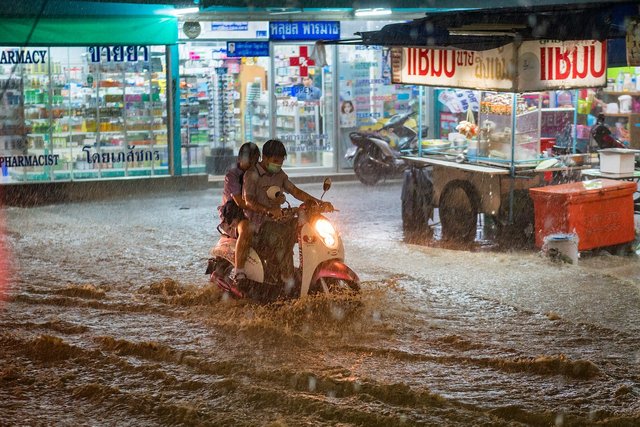
Pixabay.com: The heavy rainfall that accompanies tropical cyclones causes flooding
PREDICTING A TROPICAL CYCLONE
The importance of predicting a tropical cyclone can not be over emphasized. By knowing exactly when a tropical cyclone is going to occur, man can take preventive measures so as not to suffer loss of lives and properties when it occurs. There are two major types of tropical cyclone prediction, each of them with its specific aim. These two types are seasonable probability and tropical cyclone (hurricane) tracking.
Seasonable Probability
Meteorologist during seasonable probability consider factors that seems to indicate the likelihood that a tropical cyclone is going to occur, and also those factors that increase the chances of tropical depression and storm occurrence. Some of these factors include, El nino, oceanic water temperature, the regional air pressure system. When they compare some of these factors to other factors that occur in past tropical cyclones, with that, they can predict if a tropical cyclone is going to occur or not.
Tropical cyclone (hurricane) Tracking
The idea of this prediction is to predict the movement of a tropical cyclone that have already started. Even though it is not an exact science, the path of a tropical cyclone can be tracked and with the information gotten from it, meteorologist can predict which other city or state it's going to make landfall. Meteorologist achieve this by monitoring radar and satellite readings. With the data gotten, they can fit in tracking models like CLIPER, NHC90, BAM e.t.c. With this models, the path of the tropical cyclone can be mapped out. Also with scales like the Saffir-Simpson Hurricane Wind scales, the destructive power of a tropical cyclone is denoted.
MAN AND TROPICAL CYCLONE (or Hurricanes)
Unlike the Limnic eruption that barely occurs, tropical cyclones occur a bit too frequently, and whenever it does, it sends to whole world to mourning, as the loss is never small but it's always colossal. In this article, I will be mentioning only few of these events.
Hurricane Mitch of 1998
When this particular tropical cyclone began, it began as a tropical storm, then with time it developed. On October 24th 1998, it was already a matured tropical cyclone. It was disastrous, at first, it landed at both Swans Islands and Honduras then it moved on to and through places like El Salvador, Guatemala, Belize, Nicaragua causing so much death and destruction as it passes. The amount of properties destroyed is so much that it can't be quantified, it also caused the death of more than 19,000 people.
The places that experienced the most damages are Nicaragua and Honduras. In these two places, the heavy rainfall caused disasters like landslides and flash floods to occur. Structures like houses, roads, bridges were destroyed. About 23,900 homes were puhed down and due to that, more than 20% of the population living in Honduras became homeless.
Pointe-à-Pitre Bay Hurricane of 1776
Yet another disastrous event, but due to the lack of proper record keeping, no one really know the exact number of people that were killed by the hurricane. All we know about this tropical cyclone is the account of few historians. They said that the tropical cyclone struck Guadeloupe on the 6th of September 1776, and on the 12th of that same month, it hit again, but this time, at Louisiana. This hurricane moved at a speed of about 74mph and it is assumed that it killed more than 6,000 persons. The hurricane also caused economic damages, as it sank more than 60% of a large convoy of Merchant ships from both France and Germany that were transporting goods to the Europe.
Lake Okeechobee Hurricane of 1928
This hurricane caused so much destruction at Puerto Rico, the Bahamas, Virgin Islands before it finally got to Florida. When it got to Florida, it landed first at Palm Beach Country shoreline in Florida and with all fury, it pushed down the dike that prevents the water of Lake Okeechobee from overflowing, and the result of that is one of the biggest flooding man have ever seen. Those that weren't destroyed by the tornado that came along with it where killed by the flood. Over 4,075 people died, Laryssa Farmiga survived one of these. When the hurricane ended, it took the health department and other volunteers five days to recover the bodies of those that died as a result of the hurricane. By the fifth day, the bodies have decayed so much that it began to constitute health hazard, thus, the health department burnt all those corpses in a very large fire.
HOW TO SURVIVE A TROPICAL CYCLONE
We have seen how deadly a tropical cyclone can be, but that doesn't necessarily mean that there is no way for us to save ourselves from being destroyed by it. I will be listing out few things you can do that will really help you survive a tropical cyclone. I will be classifying them under, before, during and after a tropical cyclone.
Before a Tropical cyclone
Discuss with your family on what to do if eventually a tropical cyclone occurs. Also makes plans on how to keep in contact with each other if for any reason the family gets seperated during the disaster. Make sure that you the emergency kit packed, always ready and also within reach. The emergency kit should contain flashlight, radio, batteries, cash, first aid supplies and a copy of all your important documents. Also pack enough can food, and water.
Trim down or remove any tree that is likely to fall and cause destruction to your house or other properties if a tropical cyclone should occur. Also see to it that the rain gutters and the downspouts are cleared so that there won't be any water clogging. This sill help prevent your properties and building from being damaged by water.
Make sure that the foundation of the building and fence is strong. Also see to it that the roof of the house is strongly held to the house to avoid it pulling out during a tropical cyclone. Also, windows and doors of the house should be strongly fastened so that they won't be pulled off. Ask a civil Engineer before hand whether your house can withstand a tropical cyclone.
Insure your house and property. Always pay attention to the news. Don't forget to to buy a portable generator, it will come in handy incase of power outage. Another reason for you to do that is so that you will be always informed whenever an instruction is given by the local authorities to evacuate in the news.
During a Tropical Cyclone
If you weren't instructed by the authorities to evacuate the area, get to the safe house (a place like a bunker room), if you built one in your house. If you didn't, get to the part of the house were there are less windows, like the center passage of the house. Most people die in such disasters from being pierced by glass or debris that flies into the house as a result of the tropical cyclones. Make sure that you are already at the safe house 2 hours before the tropical cyclone finally hits.
Take your emergency kit with you as you get to a place of safety. When you are at the place of safety, hid under the table for additional safety. Don't forget to switch off the main power of the house before going into the safe part of the house, so as to avoid electrocution if in any case flooding occurs. While you are at the safe house, switch on your battery powered radio so as to receive instructions from the local authorities.
After a Tropical cyclone
With your radio listen to updates by the local authorities. If they give instruction for you to stay where you are, please do. If they say that it is okay to return back to your homes, only then should you return back. Check your family and friends so as to know if they are okay, of if they need help. You can do that by either texting them or calling them.
While returning to your home be mindful of debris and powerlines that were felled down by the hurricane and drown by the flood that accompanies it. Do not drive or walk through a flood water, avoid them. The reason for this is that, a flood that is just 6 inches high can easily knock you down and sweep you or your car away. Also, there might still be electricity in those powers lines, thus, you might be electrocuted if you step into it.
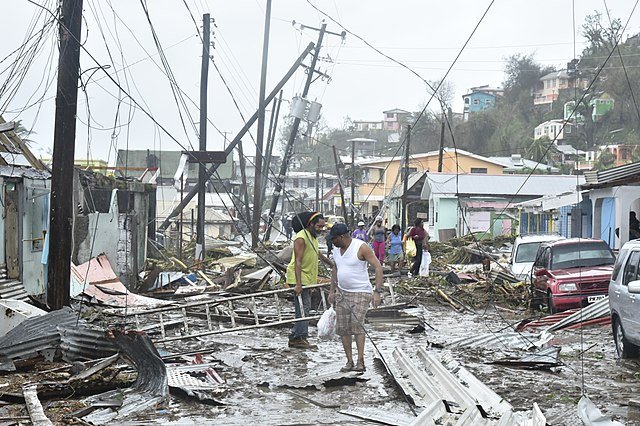
Picture by Roosevelt Skerrit - Wikicommons CC BY-SA 3.0
Damages caused by Hurricane Maria
When you finally get to the house take pictures of the damages done by the tropical cyclone, because you will surely need it when claiming your insurance benefits. After that clean up the house, and make your home habitable once more.
CONCLUSION
Everytime we experience or learn about natural disasters, all we can see is how terrible nature can be, and how helpless we are as most times to face it. Sometimes, it seems as if nature is trying to display it's strength through these natural disasters, like the tropical cyclone. But a closer study of natural disasters reveals otherwise.
Come of to think of it, take a look at the kind of house and infrastructures man builds nowadays. What if there was nothing like natural disasters, we all might still be contented with living in a hut, mud houses or even under a tree. Thus, looking at natural disasters at this light, it becomes obvious that nature is keeps pushing man to a new height of technology.
Necessity is the mother of invention. Fear of what is going to happen in the future have pushed man to great achievements. Since we have seen how destructive a Tropical cyclone can be, and how easily houses are pulled down by it, is it not wise for man to put that into consideration in the designs of his house, bridges and other infrastructures so as not to suffer loss of life or property in case it ever occurs?
I know that there are softwares in engineering one can use in running the simulations of these structures before they are built. If we can start seeing natural disasters as a push to advancement, we will marvel at what we will achieve.
This article is spornsored by mechanicassistant.com and the drivers checklist
Till next time
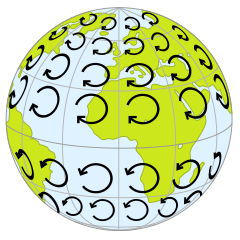
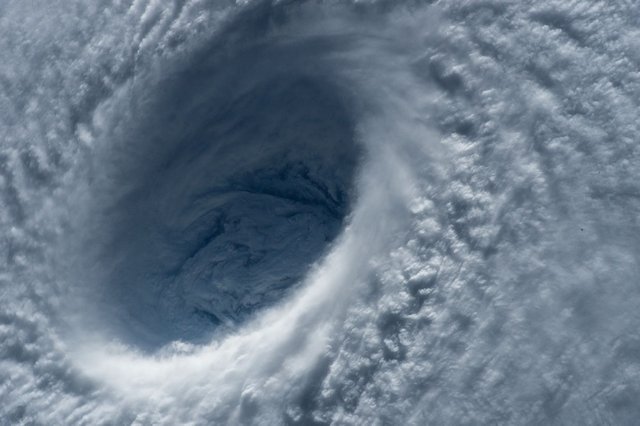

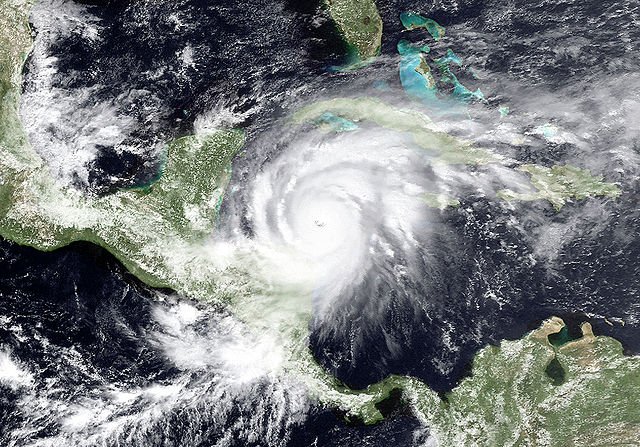
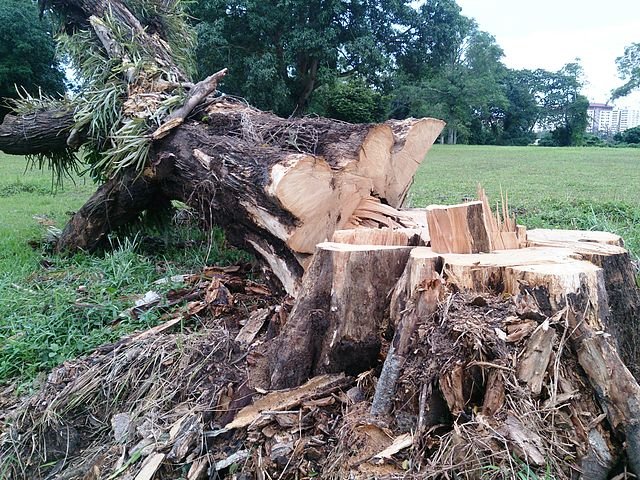
Good work @whileponderin , Tropical Cyclones (as they are called here) are a very real concern for many locations around the work. The power of these storms is awesome.
Here (in Australia) we get impacted a couple of times per year, mainly in the relatively unpopulated north, although occasionally the small cities Darwin, Cairns, Townsville and Mackay are hit hard. Sydney and Brisbane are more impacted by Extra tropical storms.
Just an interesting fact, the current world record for non-tornadic wind speed is held by Tropical Cyclone Olivia at 408 kph!
Damn.. 408kph!! I read of the destruction caused a tropical cyclone of a speed of 240kph. I thought that is the highest speed of tropical cyclones recorded by man, I also thought it is the worst tropical cyclone disaster because of the amount of damage it caused.. Now, 408kph.. am sure that one would destroy all the structures in that area. Am glad you stopped by @terrylovejoy
Top notch article as always @whileponderin !
I have the luck to never having encounter a tropical cyclone in person, but we all know how scary and dangerous they can be.
Nature is something extremely powerful and it will always be wise for us to respect it.
You flatter me @dedicatedguy. Thank you.
Nature can be mean, one of the cases when it is, is during a hurricane. For our sakes, I pray none of us experience hurricane. Very few have survived it to tell the tale. Thank you for your kind words.
Here in the Philippines we experience a lot of typhoons everywhere and its really destructive and terrifying. It's really scary when nature fights back. Amazing article @whileponderin see you around :)

Wow.. Am glad you nothing have happened to you. As for Me, I hope I never experience it.. The only natural disaster I will like to see when it occurs is volcanic eruption due to its "fireworks display", apart from that, I pray I don't get to see any other natural disaster as it occurs. Thanks for stopping by @sakura1012
Why would you want to see a volcanic eruption? Thats scary.
I meant watching a volcanic eruption from a safe point, where you will be completely safe from danger. When a volcano eruption occurs, sometimes, the lava escapes from cracks on the ground with so much speed, and it pushes itself upwards like a fountain displaying bright red color. It looks so much like fireworks display on Dec 31st whenever it happens. I have only read it, I haven't seen it occur. My wanting to see it is out of curiosity..
Im surprised that excites you. Whether near or far I wouldnt watch it, the horrors. Goodluck on that @whileponderin hehhehe.
Congratulations @whileponderin! You have completed some achievement on Steemit and have been rewarded with new badge(s) :
Click on any badge to view your own Board of Honor on SteemitBoard.
To support your work, I also upvoted your post!
For more information about SteemitBoard, click here
If you no longer want to receive notifications, reply to this comment with the word
STOP